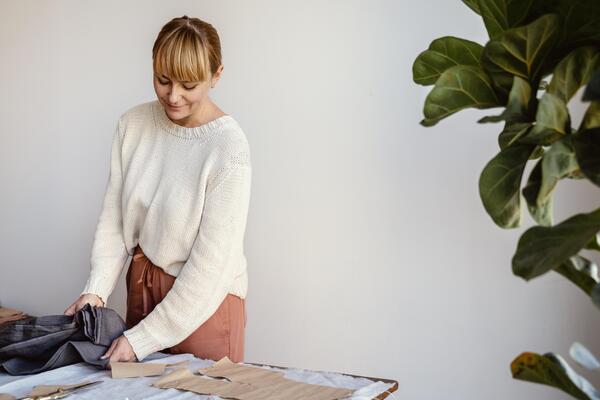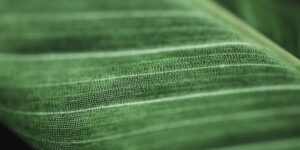Sustainable Fabrics Changing the Fashion Game in 2025
As we move deeper into the 2020s, sustainability is no longer just a buzzword in the fashion industry—it’s a necessity. With climate change accelerating and consumer demand for ethical products on the rise, brands and designers are shifting their focus toward eco-friendly, innovative fabrics that are better for the planet and people.

In 2025, sustainable fabrics are not only environmentally responsible—they’re also stylish, functional, and cutting-edge. This article explores the top sustainable textiles transforming fashion right now, why they matter, and how they’re redefining what it means to be “fashion-forward.”
1. Why Fabric Sustainability Matters
The fashion industry is one of the largest global polluters, accounting for an estimated 10% of global carbon emissions and 20% of wastewater production. Traditional textiles like polyester, nylon, and conventional cotton are resource-heavy and slow to biodegrade.
Sustainable fabrics aim to:
- Reduce water and energy usage
- Minimize chemical pollution
- Promote biodegradability or recyclability
- Support ethical labor practices
Consumers in 2025 are making more informed choices, and they’re demanding better from brands—starting with what their clothes are made of.
2. Top Sustainable Fabrics Making Waves in 2025
🍃 Organic Cotton
- Grown without harmful pesticides or synthetic fertilizers
- Uses less water and improves soil health
- In 2025, it’s now grown with regenerative farming techniques that even capture carbon from the atmosphere
Major brands like Patagonia, Pact, and Everlane use organic cotton across their collections.
What Else Would You Like to Know?
Choose below:
🌾 Hemp
- One of the most sustainable crops on Earth
- Requires minimal water, grows fast, and replenishes soil nutrients
- Hemp fabrics in 2025 are softer, blended with cotton or Tencel for better drape and wearability
Hemp is becoming popular in both streetwear and high fashion for its rugged look and eco-cred.
🌱 Tencel™ / Lyocell
- Made from sustainably harvested wood pulp (typically eucalyptus or beech trees)
- Produced in a closed-loop process, meaning 99% of solvents are reused
- Soft, breathable, and ideal for everything from activewear to suiting
This fiber is especially beloved for how it blends beautifully with other sustainable materials.
🧵 Recycled Polyester (rPET)
- Created by melting down used plastic bottles or polyester garments
- Significantly reduces reliance on virgin petroleum
- Brands are now using low-impact dyeing methods to further enhance sustainability
While it’s not biodegradable, rPET supports circular fashion models and reduces plastic waste.
🍌 Banana Fiber (Abacá)
- Made from banana tree stalks, a byproduct of the fruit industry
- Strong, breathable, and biodegradable
- In 2025, banana fiber is increasingly used in luxury bags, outerwear, and artisanal accessories
It’s especially popular in Southeast Asia and among emerging ethical labels.
🐄 Mycelium Leather (Mushroom-Based)
- A biodegradable leather alternative made from fungal roots (mycelium)
- Requires far less water and energy than animal leather
- Has a luxurious feel and is now used by high-end designers like Stella McCartney and Hermès
This material is redefining what cruelty-free fashion can look like.
🧬 Algae-Based Textiles
- Algae is used to create bio-yarns and bio-foams
- Some fabrics even absorb CO₂ during wear!
- Lightweight and ideal for sportswear, activewear, and footwear
Algae is one of the most promising renewable resources in textile science.
3. The Technology Behind the Fabrics
Sustainable fashion in 2025 is backed by smart textiles, biotechnology, and AI-driven production systems. Here’s how tech plays a role:
- AI algorithms predict demand and reduce overproduction
- Enzymatic dyeing replaces toxic chemical processes
- Blockchain technology ensures traceability in the supply chain
This means that the fabrics are not only eco-friendly—but also ethically and transparently sourced.
4. How to Shop for Sustainable Fabrics
When shopping in 2025, here’s how to make smarter, more sustainable decisions:
- Read labels carefully: Look for terms like “GOTS-certified organic cotton,” “TENCEL™,” “recycled,” or “plant-based.”
- Use sustainability filters: Many online stores now allow filtering by fabric or impact.
- Support slow fashion brands: Brands focused on quality over quantity often use better materials and ethical production methods.
- Ask questions: Don’t be afraid to contact brands or check their sustainability pages for info about materials and sourcing.
The more informed you are, the more power you have to shape the industry through your purchases.
5. Challenges and Considerations
Even the best sustainable fabrics have limitations:
- Some are more expensive to produce
- Others still rely on synthetic blends for durability
- Accessibility remains a concern, especially in fast fashion pricing models
That’s why the industry must continue pushing for innovation, affordability, and education.
Final Thoughts: Fashion That Feels Good and Does Good
In 2025, the most stylish thing you can wear is conscience. Sustainable fabrics are redefining not only how our clothes are made—but how they feel, function, and fit into our values.
By choosing these materials, you’re investing in fashion that’s not just beautiful and comfortable—but thoughtful and future-ready. It’s not about perfection, but about progress. Every fiber counts.
The Importance of Fashion in Human History: More Than Just Clothing
» See exclusive tips for your home







